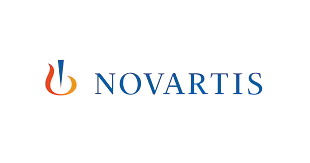The Most Effective SAFe® Advanced Scrum Master Certification Exam Preparation
The ScholarAcad Advantage
1. Module: Introduction of Scrum in SAFe
- Concepts of Basic Agile Development
- Basics of Scrum
- Establish Agile Team in SAFe Enterprises
2. Module: Scrum Master Role Characterization
- Scrum Master Responsibilities
- Effective Scrum Master Characteristics
- High-performing Teams
- Use Powerful Questions to Coach Agile Team
- Team Events
- Cross Team Collaboration
- Resolve Conflicts in Teams
3. Module: Experience PI Planning
- Basics of PI Planning
- Drafting PI Planning
- Business Value and Final Plans
- PI Objectives and Final Plan Review
- Facilitate PI Planning
4. Module: Facilitate Iteration Execution
- Plan Iteration
- Track Progress of Iteration
- Refine Backlogs
- Facilitation Iteration Reviews
- Implement Relentless Improvement
- Supports Release-on-Demand and DevOps
5. Module: Finish PI
- Coach IP Iteration
- Preparing Team to Inspect & Adapt Event
6. Module: Practice SAFe
- SAFe Practice in Organizations
View More
Who This Course is For

Prerequisites and Eligibility
No formal prerequisites: Open to individuals with varying levels of experience and backgrounds.
Familiarity with Agile principles and the Scrum framework is beneficial.
Completion of the SAFe for Teams course is required to establish a foundation in SAFe concepts.
Passing the SAFe Scrum Master exam (SSM) validates your understanding of SAFe and Scrum principles.

SAFe® Advanced Scrum Master Certification Among the Highest Paying Certifications





















Training Calender For Course SAFe® Advanced Scrum Master Certification
Your Path to Acing Your SAFe® Advanced Scrum Master Certification Exam

Master the SAFe Framework: Learn the principles that underpin SAFe.
Understand the underlying methodologies that inform SAFe
Gain hands-on experience applying SAFe principles.
Understand the Scrum roles, events, artifacts, and principles.
Cultivate a mindset of service and support for your team.
Familiarize yourself with the exam structure, question types, and time limits
Practice with SAFe Practice Exams
SAFe® Advanced Scrum Master Certification Earn The Coveted SAFe® Advanced Scrum Master Certification Certification

Sample Certificate Image
View More
Our Learners Love Us
Scholaracad's Business Analysis Foundation training with Umesh was excellent. His knowledge was impressive, and he explained everything clearly. The Scholaracad team was very helpful. Merci beaucoup!

Scholaracad's COBIT training with Umesh was excellent. His knowledge was impressive, and he explained everything clearly. The Scholaracad team was very helpful. Merci beaucoup!

Scholaracad's PRINCE2 Foundation and Practitioner training was top-notch. Trainer Pierre was very experienced and explained the principles clearly, using examples relevant to projects in Luxembourg. The Scholaracad team was very helpful from the beginning. Merci!

Learning Objectives
General Frequently Asked Questions
View More
View More
View More
View More
View More
View More
Expert Articles on SAFe® Advanced Scrum Master Certification
Read More...
Read More...
Read More...
Luxembourg: A Hub for Technology, Learning, and Careers
Luxembourg , a small landlocked country in Western Europe, has transformed itself into a global leader in finance, technology, and space innovation. Despite its size, Luxembourg leverages its stable economy, strategic location, and forward-thinking policies to drive technological advancements.
Digital Transformation
Luxembourg is a hub for digital innovation, particularly in fintech and blockchain:
- Fintech Leadership : As a global financial center, Luxembourg embraces fintech through initiatives like the Luxembourg House of Financial Technology (LHoFT) , which supports startups in AI, blockchain, and payment solutions.
- Blockchain Pioneer : Luxembourg was among the first countries to adopt progressive blockchain regulations. Companies like Société Européenne des Satellites (SES) use blockchain for secure satellite data transmission.
- Smart Cities : Luxembourg City integrates IoT, AI, and data analytics to improve urban mobility, energy efficiency, and public services, positioning itself as a model smart city.
Cybersecurity Excellence
Given its role as a financial hub, Luxembourg prioritizes cybersecurity:
- The country hosts the European Cybersecurity Organisation (ECSO) , fostering collaboration across Europe to enhance digital security.
- Robust frameworks protect critical infrastructure and sensitive data, ensuring trust in Luxembourg’s financial systems.
Space Technology
Luxembourg leads in space innovation:
- SpaceResources.lu : This initiative focuses on asteroid mining and positions Luxembourg as a hub for space exploration.
- SES : Headquartered in Betzdorf, SES is one of the world’s largest satellite operators, providing global communication services.
- EU Space Programs : Luxembourg plays a key role in initiatives like Galileo and Copernicus .
Tech Ecosystem
Luxembourg fosters a thriving tech ecosystem:
- Startups and Innovation : The Luxembourg Tech Hub supports startups in green tech, AI, and digital health. Agile practices like Scrum and SAFe are widely adopted for project management.
- Research and Development : Institutions like the Luxembourg Institute of Science and Technology (LIST) drive innovation in materials science, environmental tech, and IT.
Need More Information ?
Have more questions or need personalized guidance ?

Top Companies in Luxembourg Hiring SAFe® Advanced Scrum Master Certification Professionals in 2025
| Company Name | Role | Job Description | Job Link |
|---|---|---|---|
| Amazon | Project Manager | Amazon’s Project Manager in Luxembourg leads tech or financial projects, like AWS deployments, ensuring scalability. You’ll manage budgets, schedules, and teams, using Agile tools like Jira. With 5+ years of experience and a PMP certification, you’ll thrive in Luxembourg’s tech hub. Strong English and French skills are critical for global collaboration, while cloud or fintech expertise enhances impact. You’ll drive Amazon’s mission of customer-centric innovation, contributing to Luxembourg’s digital economy, with growth opportunities in a global leader. This role shapes Luxembourg’s tech future in a financial hub. | Job Link |
| Accenture | Project Manager | Accenture’s Project Manager in Luxembourg oversees digital transformation projects, like cloud or fintech solutions, for European clients. You’ll define scope, manage resources, and track progress using Agile tools like Trello. With 5+ years of experience and a PMP certification, you’ll lead teams in Luxembourg’s tech ecosystem. Strong English and French skills drive global collaboration, while knowledge of EU finance enhances delivery. You’ll foster innovation, leveraging Accenture’s expertise, with opportunities to grow in a leading firm. This role supports Luxembourg’s digital economy in a global financial center. | Job Link |
| IBM | Project Manager | IBM’s Project Manager in Luxembourg leads IT projects, like cloud or AI solutions, ensuring client satisfaction. You’ll manage timelines, budgets, and teams, using Agile tools like Jira. With 5+ years of experience and a PMP certification, you’ll excel in Luxembourg’s tech hub. Strong English and French communication supports global coordination, while IBM Cloud knowledge is a plus. You’ll drive digital transformation, contributing to Luxembourg’s tech growth, with career advancement in IBM’s innovative network. This role delivers cutting-edge solutions in a competitive financial market. | Job Link |
| Clearstream | Project Manager | Clearstream’s Project Manager in Luxembourg leads financial tech projects, like clearing systems, ensuring efficiency. You’ll manage budgets, schedules, and teams, using Agile tools like MS Project. With 5+ years of experience and a PMP certification, you’ll thrive in Luxembourg’s financial hub. Strong English and French skills are critical for stakeholder engagement, while fintech expertise drives impact. You’ll support Clearstream’s mission of secure transactions, contributing to Luxembourg’s tech leadership, with career opportunities in a dynamic environment. This role shapes Luxembourg’s financial tech future. | Job Link |
| SES | Project Manager | SES’s Project Manager in Luxembourg leads satellite tech projects, like broadband solutions, ensuring global connectivity. You’ll manage project lifecycles, resources, and risks, using Agile tools like Jira. With 5+ years of experience and a PMP certification, you’ll lead teams in Luxembourg’s space tech hub. Strong English and French skills support global collaboration, while satellite tech expertise enhances delivery. You’ll drive SES’s mission of universal access, supporting Luxembourg’s digital transformation, with career growth in a cutting-edge industry. This role shapes Luxembourg’s space tech landscape. | Job Link |





_1756885658_5bde5ece2b6f0dab9403.jpg)
_1756881713_31cf44769b7f1030f08e.jpg)